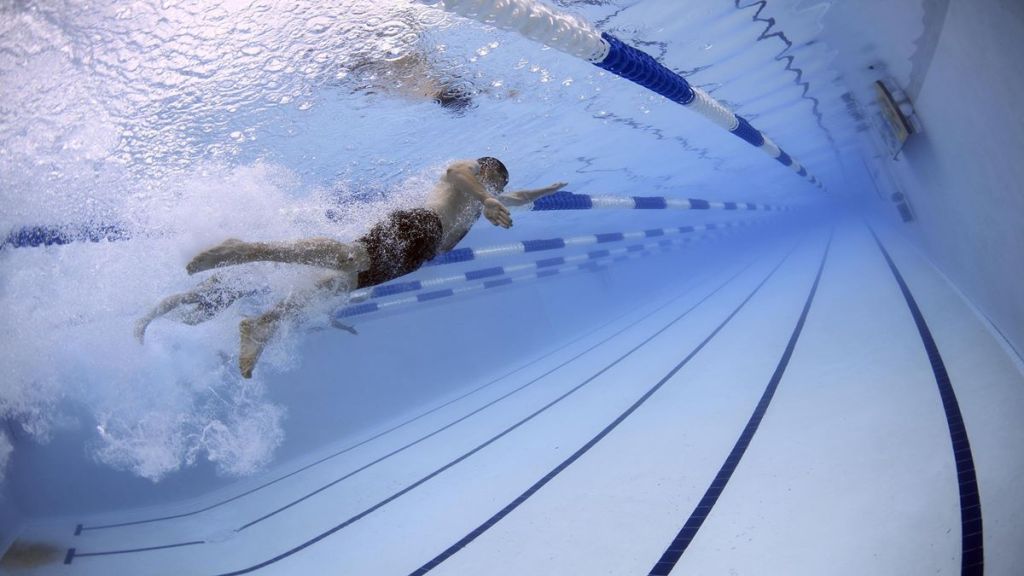As the summers are here, splashing around and taking deep dives is a fun and favourite pastime of the season. However, as you take out your swimwear and get ready to jump in the pool, it is important to know about the various swimming-related illness.
According to the Centre for Disease Control and Prevention (CDC), there are various illnesses that people can get from the water in which they swim like swimming pool, splash pads, oceans, lakes and rivers.
“Swimming is a very good exercise in summer; however, caution should be taken as it can be the reason for medical issues as well,” Dr Sachin D, Consultant Interventional Pulmonology, Critical care and Sleep Medicine, Fortis Cunningham Road, Bangalore told Financial Express.com.
According to Dr. Sachin, chlorine and other cleansers used in pools can be harmful. Harmful disinfectant by-products (DBP) are generated when humans (sweat, saliva, sunscreen, and other cosmetics) come in contact with chlorine. Swimming can also cause skin infections such as swimming pool granuloma, swimmer’s itch, and pseudomonas dermatitis. Swimming pool conjunctivitis (Adenovirus) and ear infections, especially in children, are also common, he revealed.
“Swallowing pool water can cause gastroenteritis (E. coli, rotavirus, Shigella, and Salmonella infections). Diarrhea can still occur after proper chlorination as some parasites (Cryptosporidium and Guardia) can survive in chlorinated water. Pseudomonas can cause bacterial urinary tract infections. Aspiration of chlorinated water affects the lungs, causing acute tracheobronchitis, severe coughing, and chest congestion. Chlorine can also trigger asthma and allergies, including skin rashes (eczema),” Dr. Sachin added.
In addition to the above, injuries, electrical shocks, and drowning can also occur if proper precautions are not taken in waiting pools, he added.
‘Know the depth of pool before you jump’
According to Dr. Sumit Goyal, Senior Consultant Neurosurgeon and Head Neurointervention at PSRI Hospital, gauzing the depth of the pool should not be based on guesses but should be known for sure before using the pool. Most of the pools will have clear instructions on the depth of the pool along the various lengths of the pool.
“In such a scenario when we jump into water just based on perception we actually expose ourselves to the fear of drowning as the pool is actually much deeper then it appeared and there was no ground to rest on. A good number of pools are now non diving pools with depth not more than 5 feet. This needs special consideration in young enthusiast divers and swimmers who sometimes conveniently ignore this and dive into shallow pools. Since they get over it once they do it again and as we are not lucky every time , this may have serious consequences,” Dr. Goyal told Financial Express.com.
Dr. Goyal also share an incident in which a man sustained injury after jumping into a shallow pool.
“We had a similar situation where a young 23-year male while having fun in the pool with friends at Goa, decided to dive into a shallow pool. Without sustaining any injuries in initial dives as he became more confident and less careful he banged his head on the floor of the pool. Luckily he did not have any head injury but had severe neck pain after that. When he was seen by a specialist and his X-ray revealed a fracture of the cervical spine with the slipping of one of the cervical vertebrae over the other. This could have led to immediate complete paralysis of the body with no definitive way to reverse the damage. Fortunately for him, he just had right grip weakness and was immediately flown to Delhi where he underwent surgery of the cervical spine with fixation using plates to restore things to normalcy,” he told Financial Express.com.
Not everyone will be as fortunate as the above case and cervical spine injury is mostly unforgiving with permanent residual paralysis/bedridden state.
“Most of the time the neurological damage sustained post spine injury is permanent and the surgery is aimed at stabilizing the spine and preventing further damages and no one can predict how much recovery will occur in the preexisting damages. Besides spine injury direct hitting of head with force on the floor of the pool can also lead to severe head injury and loss of consciousness which can again have severe consequences especially underwater which can also lead to drowning and further damage,” he added.
Chlorine can lead to skin discolouration
Dr. Bhavyashree U.G, Dermatologist, Specialist Hospital, Bangalore highlighted that Chlorine is a commonly used disinfectant in pools and can sometimes lead to discoloration of the skin, chlorine rash, and swimmer itch.
“Other problems such as Hot tub folliculitis, fungal, viral, and bacterial infections along with allergic and irritant contact dermatitis, xerosis, and swimming pool granuloma could possibly occur as well. In addition, inadequate pool maintenance and improper use of chemicals can result in the growth of harmful bacteria, parasites, and viruses that can cause gastrointestinal illness, skin infections, and other infections,” Dr. Bhavyashree told Financial Express.com.
Dr. Bhavyashree recommended taking steps to minimise exposure to these harmful agents by ensuring proper pool maintenance, using protective gear such as goggles and proper swimming costume, and practising good hygiene habits such as showering before and after swimming.
Dr. J Harikishan, Senior General Physician, Kamineni Hospitals, Hyderabad revealed that waterborne illnesses like E. coli and cryptosporidium can arise if the pool is not properly chlorinated.
Mishaps and accidents while swimming
According to Dr. Harikishan, slippery surfaces around the pool can lead to falls and injuries, while drowning is a serious risk for young children who are not strong swimmers.
He also maintained that electrical hazards can also occur if the pool’s wiring is not grounded or if electrical devices are used near the pool. Therefore, it is essential to follow proper maintenance and safety protocols, he added.
“Regular water testing is necessary to ensure that the pool’s chemical levels are safe. Proper chemical handling is also important to prevent accidents and injuries. Installing safety barriers and pool covers can help prevent accidents and reduce the risk of drowning. Keeping electrical devices away from the pool area and ensuring that the pool’s wiring is grounded can prevent electrical hazards,” Dr. Harikishan added.
Harmful effects on Children
Dr. Parimala V Thirumalesh, Senior Consultant Neonatology and Paediatrics, Aster CMI hospital pointed out that swimming pool can have harmful effects on children’s health for the following reasons:
First the chlorine content in pool water can cause red eyes, dry eyes, and sometimes conjunctivitis if water is infected due to the usage by other people who have the infection
It can also cause dry skin due to chlorine and heat stroke if sunscreen is not used by children when swimming in exceptionally hot weather.
Other issues are that some children pee in the pool or get into the pool when they have a respiratory infection like a cold or cough and the secretions get mixed in pool water and when other children are in contact with the same can catch the infection.
Also, sudden temperature changes like getting into a cold pool when it’s very hot or coming to a cool environment from a heated pool can also exacerbate allergies, asthma, and cough including pneumonia
So to avoid this pool should be well maintained, and clean, people should not pee in the pool, should not swim when unwell with any contagious disease and chlorine content should be monitored to be within acceptable norms.
Effects of Chlorinated water from swimming pool on eyes
Dr. Ajay Sharma Chief Medical Director of EyeQ revealed that some people may experience harmful effects from swimming in chlorinated pools, particularly on their eyes.
“While chlorine is necessary for maintaining pool hygiene, it can also cause a range of negative effects, especially for individuals who are exposed to it regularly. Chlorine is commonly used to sanitize swimming pool water and prevent the growth of harmful bacteria and other microorganisms. While it is effective at keeping pools clean, chlorine can also irritate the eyes and cause several other health problems. The most common eye problems that swimmers may experience include redness, itching, burning, and watery eyes. These symptoms can be caused by a range of factors, including the pH level of the water, the concentration of chlorine, and the amount of time spent in the pool,” Dr. Sharma told Financial Express.com.
When chlorine is added to water, it creates a chemical compound known as chloramine. Chloramines are known to cause irritation to the skin and eyes, and prolonged exposure to these compounds can lead to serious health problems.
Dr. Sharma also revealed that in addition to chloramines, swimming pools can also contain other harmful chemicals that can affect the eyes.
According to Dr. Sharma, the most common types of eye infections that swimmers may experience include conjunctivitis (pink eye), keratitis (corneal inflammation), and blepharitis (eyelid inflammation).
Some of the best ways to prevent eye problems when swimming include wearing swim goggles to protect the eyes from chlorine and other irritants, using saline eye drops to keep the eyes moist and reduce irritation, and showering after swimming to wash off any residual chemicals.
How to swim safely?
According to CDC, if you or someone you know is suffering from diarrhea, in the past two weeks, you should stay out of the water.
To protect yourself from the most common swimming-related illnesses:
- Keep water out of your mouth when you swim
- Dry your ears after you swim









